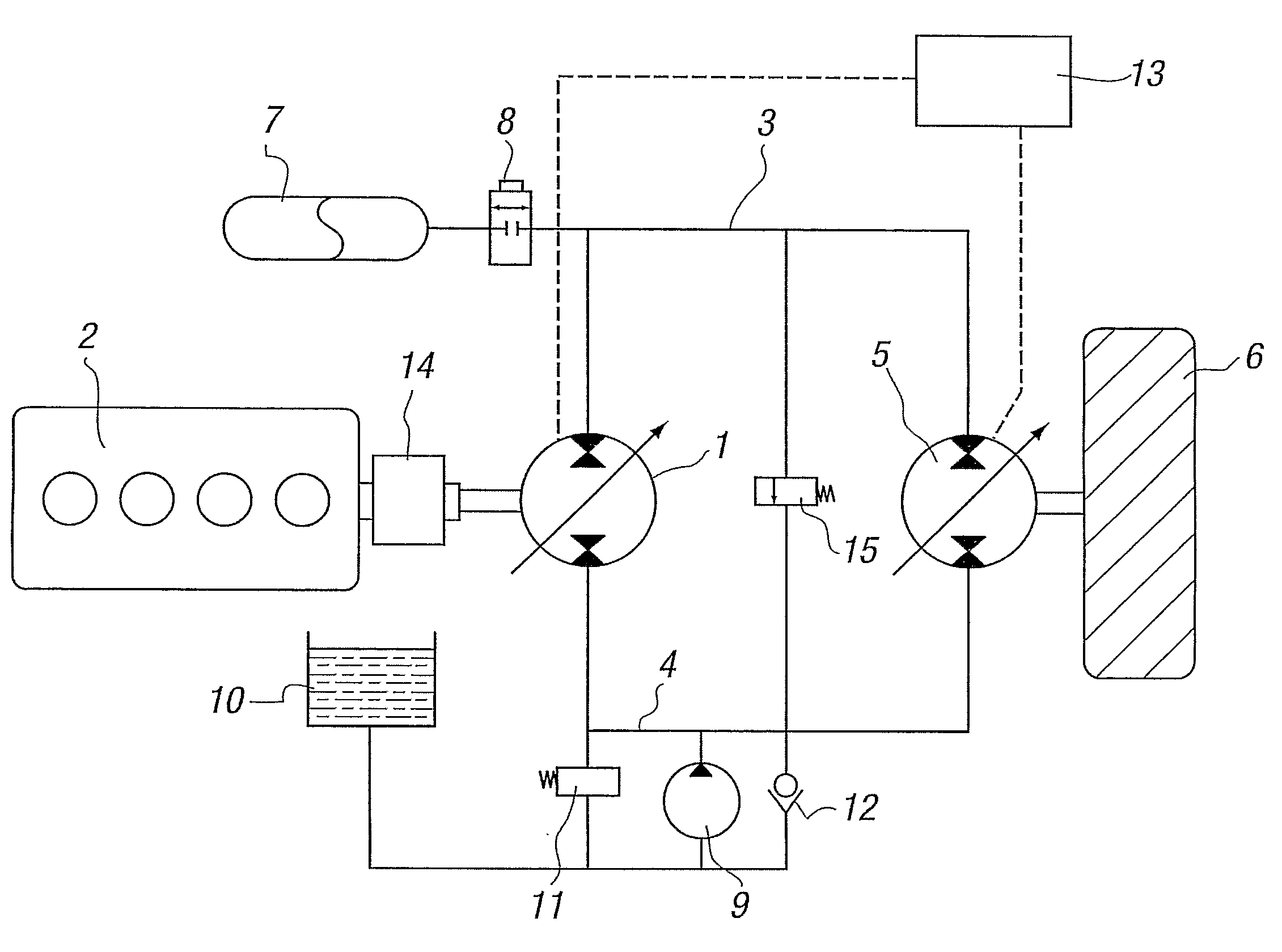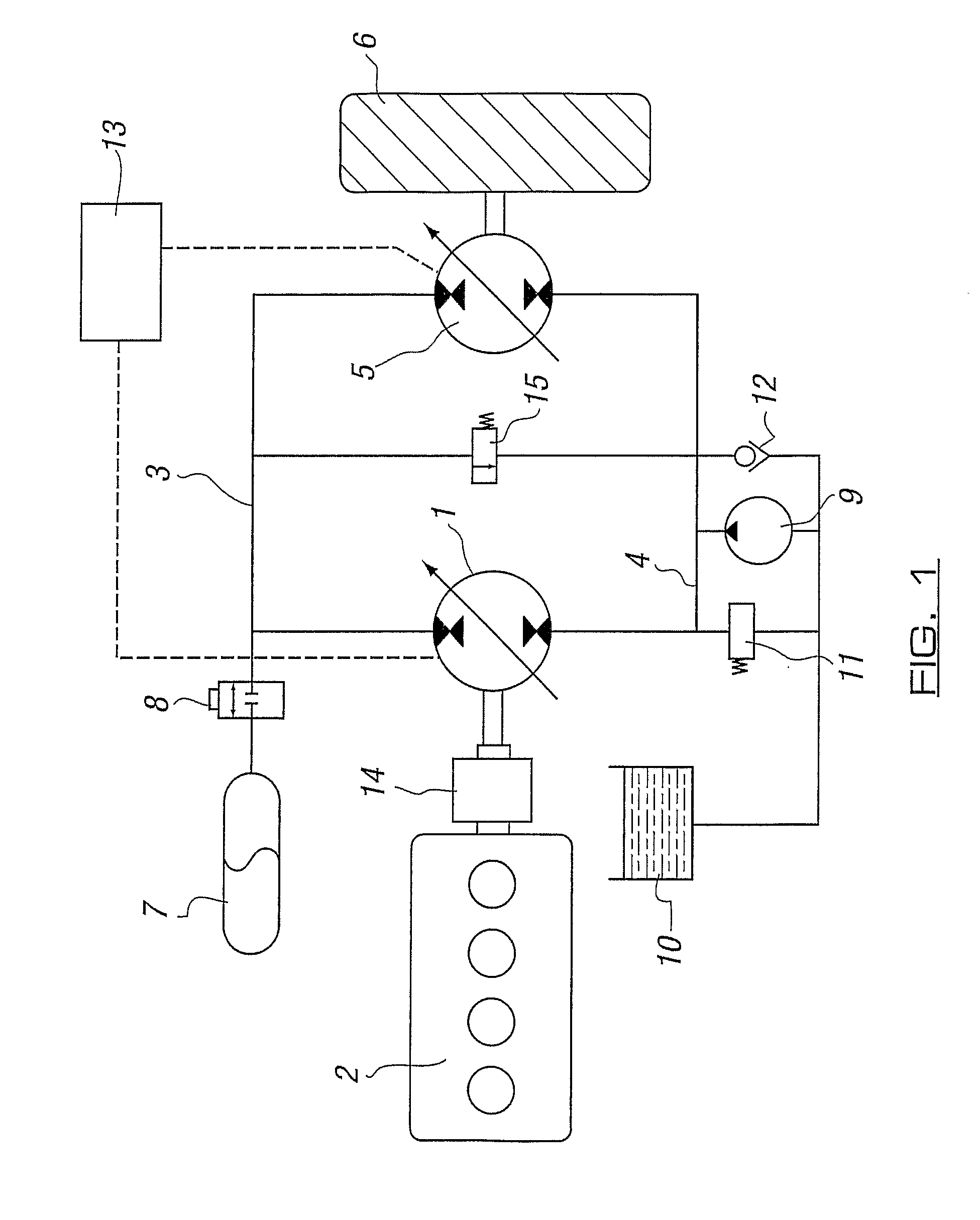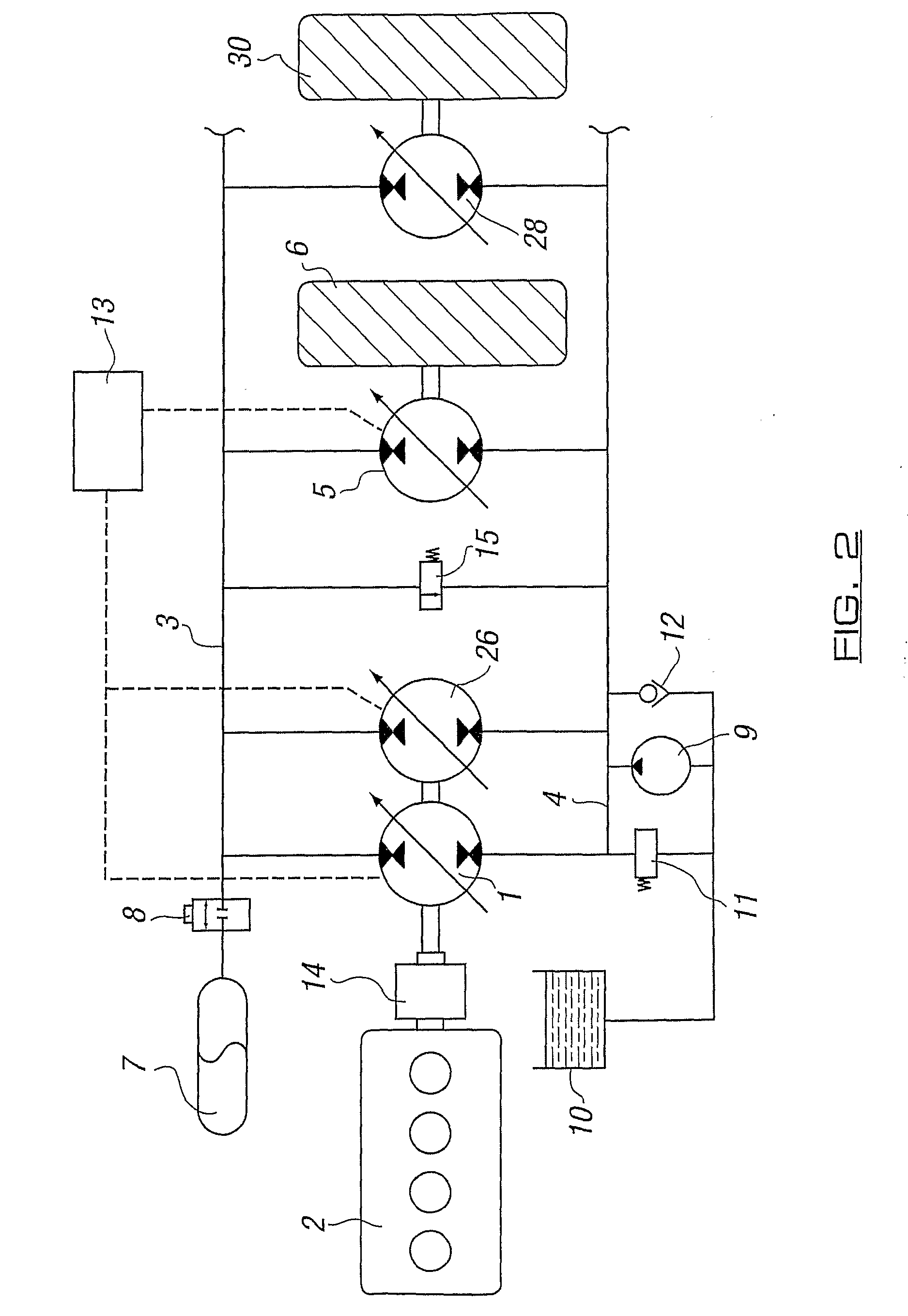Hydrostatic regenerative drive system
a regenerative drive and hydraulic technology, applied in the direction of fluid hybrid vehicles, gearing control, instruments, etc., can solve the problems of increasing the volume of working fluid inside the accumulator, the inability to fully realize the market, so as to achieve the effect of greatly simplifying the hydraulic connection
- Summary
- Abstract
- Description
- Claims
- Application Information
AI Technical Summary
Benefits of technology
Problems solved by technology
Method used
Image
Examples
Embodiment Construction
[0024]FIG. 1 shows a possible embodiment of the transmission circuit, different layouts providing the same functionality are not ruled out. The system consists of a first fluid working machine 1 possibly of Digital Displacement™ principle driven by a prime mover 2. The first fluid working machine 1 might be driven directly from the prime mover or through a unit 14, which might contain a clutch or gear drive or both. The high-pressure fluid manifold is connected to a high-pressure fluid line 3. The low-pressure fluid manifold is connected to a low-pressure line 4. A second fluid working machine 5, preferably of Digital Displacement™ principle, is connected to a load 6. Its high-pressure manifold is connected to the fluid line 3 and its low-pressure manifold to a low-pressure fluid line 4. A high-pressure accumulator 7 is connected to the high-pressure fluid line 4 possibly through an on / off valve 8.
[0025]A microprocessor 13 is employed to control the first fluid working machine 1 and...
PUM
 Login to View More
Login to View More Abstract
Description
Claims
Application Information
 Login to View More
Login to View More - R&D
- Intellectual Property
- Life Sciences
- Materials
- Tech Scout
- Unparalleled Data Quality
- Higher Quality Content
- 60% Fewer Hallucinations
Browse by: Latest US Patents, China's latest patents, Technical Efficacy Thesaurus, Application Domain, Technology Topic, Popular Technical Reports.
© 2025 PatSnap. All rights reserved.Legal|Privacy policy|Modern Slavery Act Transparency Statement|Sitemap|About US| Contact US: help@patsnap.com



